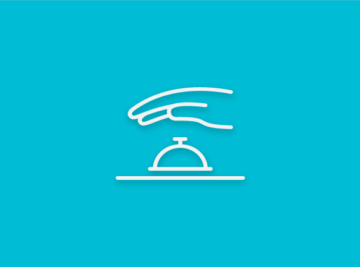As consumer behavior continues to shift alongside evolving technology, brands need to stay on top of the latest trends in order to deliver the most effective content to their audiences.
Social media platforms, blogs, and online reviews have all contributed to a greater importance of consumer opinions on purchasing behavior. As a result, consumers are more likely to trust the opinions of their peers rather than messaging that was clearly created by the brand itself.
Download our free Social Media Pre-Publishing Checklist

How do brands keep up? Enter: User-Generated Content. Implementing a UGC campaign could prove to be an effective way to boost authenticity, awareness, and engagement for your brand.
What is User-Generated Content?
So, what exactly is UGC then? Well, in order to really understand what it is and why it’s important, we first need to bring the discussion back to inbound marketing. The inbound process goes like this: through valuable content we attract visitors, convert them to leads, close them as customers, and delight them with our products and services. But does it really end there? Marketers can sometimes get caught up in the early stages of the process and overlook the value of delighted customers. In truth, delighted customers can be a source of fantastic content that attracts more visitors and starts up the process all over again.
The definition of user-generated content is as straightforward as it sounds: it is content created by your customers about your brand. People who have had a positive experience with a product or service are generally eager to share their story with others. The most popular outlets for doing so are usually Facebook, Twitter, Instagram, and other social networks, as well as online reviews, blog posts, and more.
The beauty of UGC is that it can be mutually beneficial to both brands and consumers. Customers are often proud to share their experiences with their friends and are flattered when a brand takes notice. Brands that leverage UGC can take advantage of the perception of authenticity and trust, leading to higher engagement and conversion rates.
Pros and Cons of UGC
Just like any other marketing strategy, there are pros and cons to implementing a UGC campaign.
One of the biggest benefits of UGC is the ability to build brand trust and authenticity. Through UGC, customers are promoting your brand for you in a way that is more compelling to your audience. By simply re-sharing content from an actual customer, your brand demonstrates a real human connection that consumers look for. It has been shown recently that well-executed UGC campaigns have led to higher brand engagement and increased conversion rates as a result.
On the other hand, there are a few things to be cautious of when it comes to using content generated by someone else.
The most important rule in UGC is to always give credit to the original creator. As a general rule, you should always ask for permission to use someone’s content before recreating it in any way. More often than not, delighted customers will be excited to share their work with a brand that they are fond of. However, for obvious reasons such as copyright and privacy laws, failing to ask for permission could be detrimental to your campaign.
In addition, you should be sure to do your homework before sharing content created by someone outside of your brand. When deciding to share a message from someone outside of your organization, you need to be sure that their personal brand aligns with your own (or at the very least, doesn’t contradict your brand values). Do a little bit of research to ensure that none of their other content could be construed as offensive to your target audience.
How to Encourage UGC
If you decide that UCG is something you want to incorporate into your marketing strategy, there are a few things you can do to encourage your customers to create content about your product or service.
One of the most popular methods of encouraging UGC is selecting a hashtag that aligns with your campaign. Let your audience know you want to see their content by asking them to share their thoughts, experiences, photos, and videos with the hashtag you’ve created. As always, don’t forget to include a clear call to action when executing this step.
Another way to engage your users is to invite them to participate in a contest. Calling it a contest might sound gimmicky, but asking your customers to share a photo or video for a chance to be featured on your website or win a piece of swag could prove to be a powerful driver of participation.
GoPro has leveraged this tactic by starting their #GoProSnow Challenge in which users share their best photos and videos for a chance to win up to $1,000. Even those who don’t win have the chance to be featured on the official GoPro Instagram page.
Customers as Promoters
With proper planning and due diligence, integrating user-generated content into your marketing efforts could be an effective way to boost performance. It’s important to remember that inbound marketing doesn’t end when a product or service is delivered, rather it continues on as delighted customers become your most valuable brand promoters.









